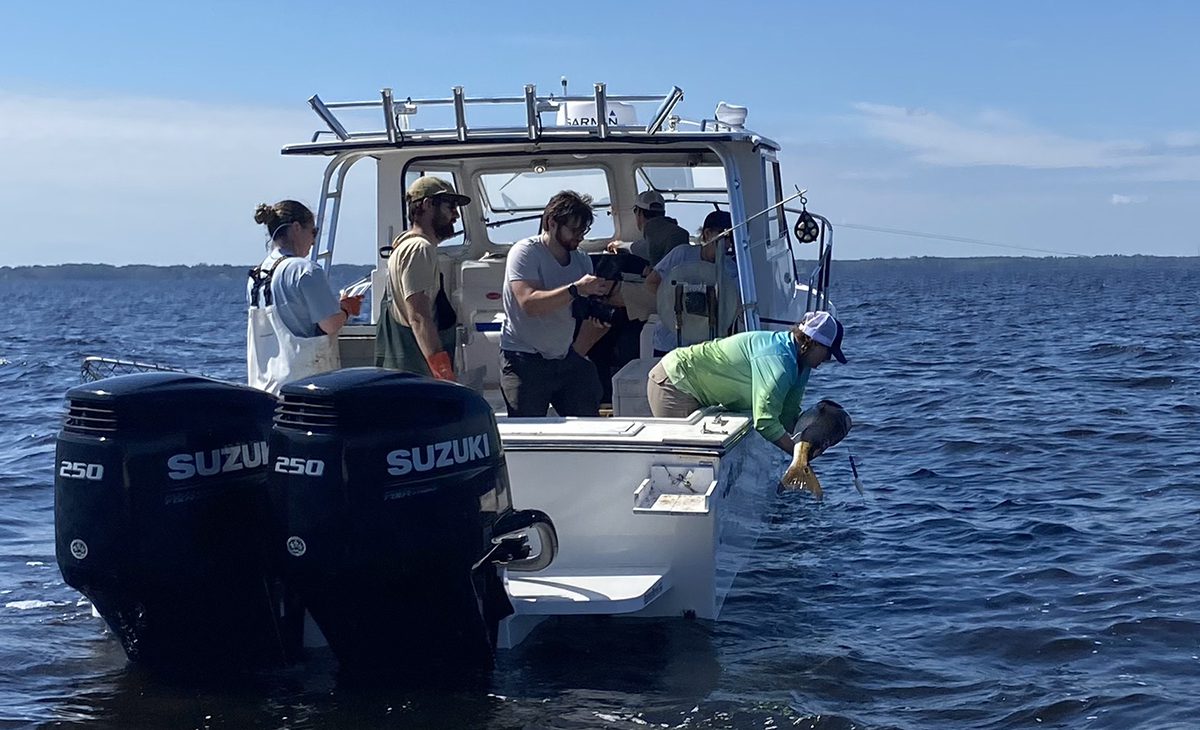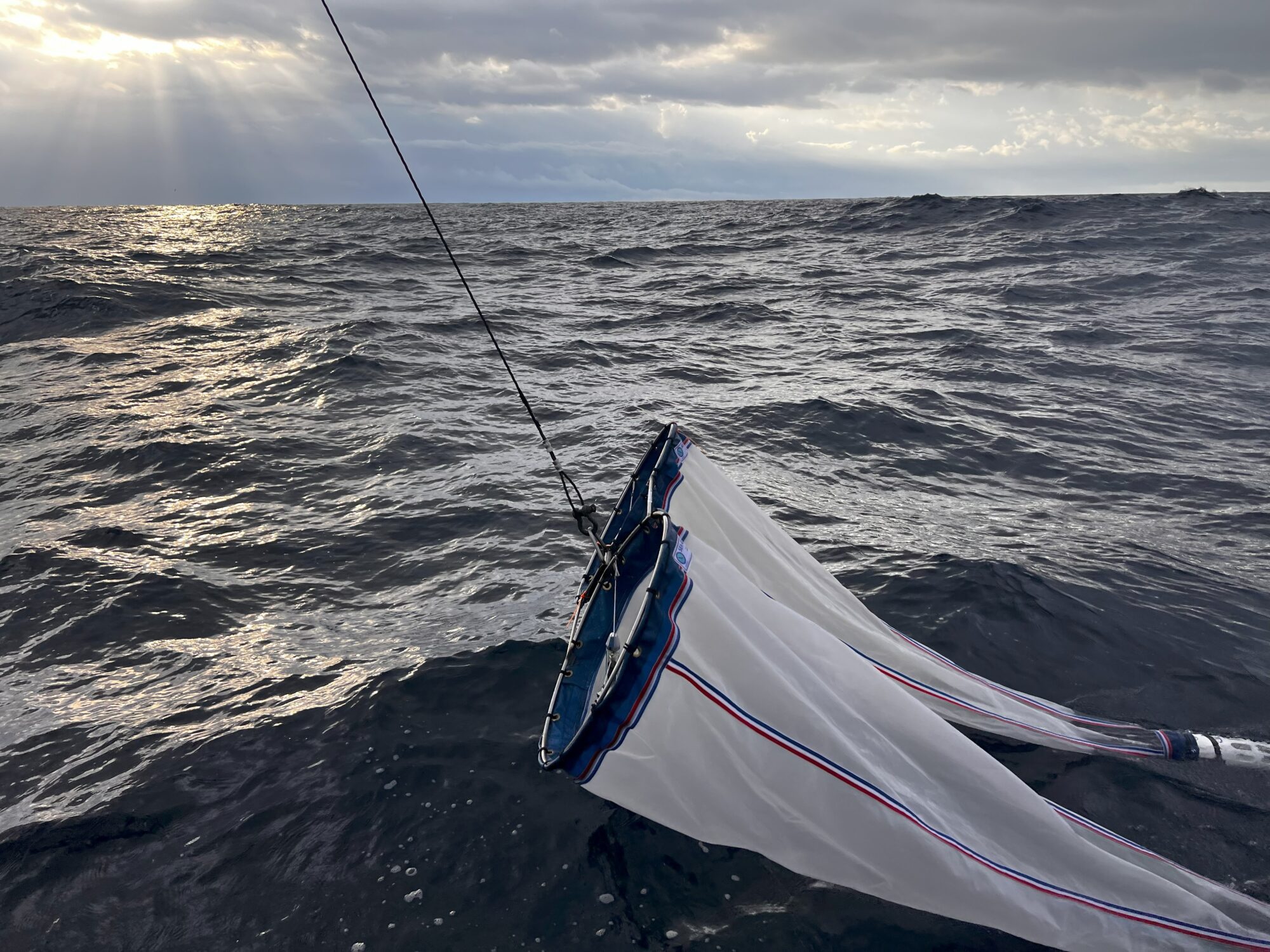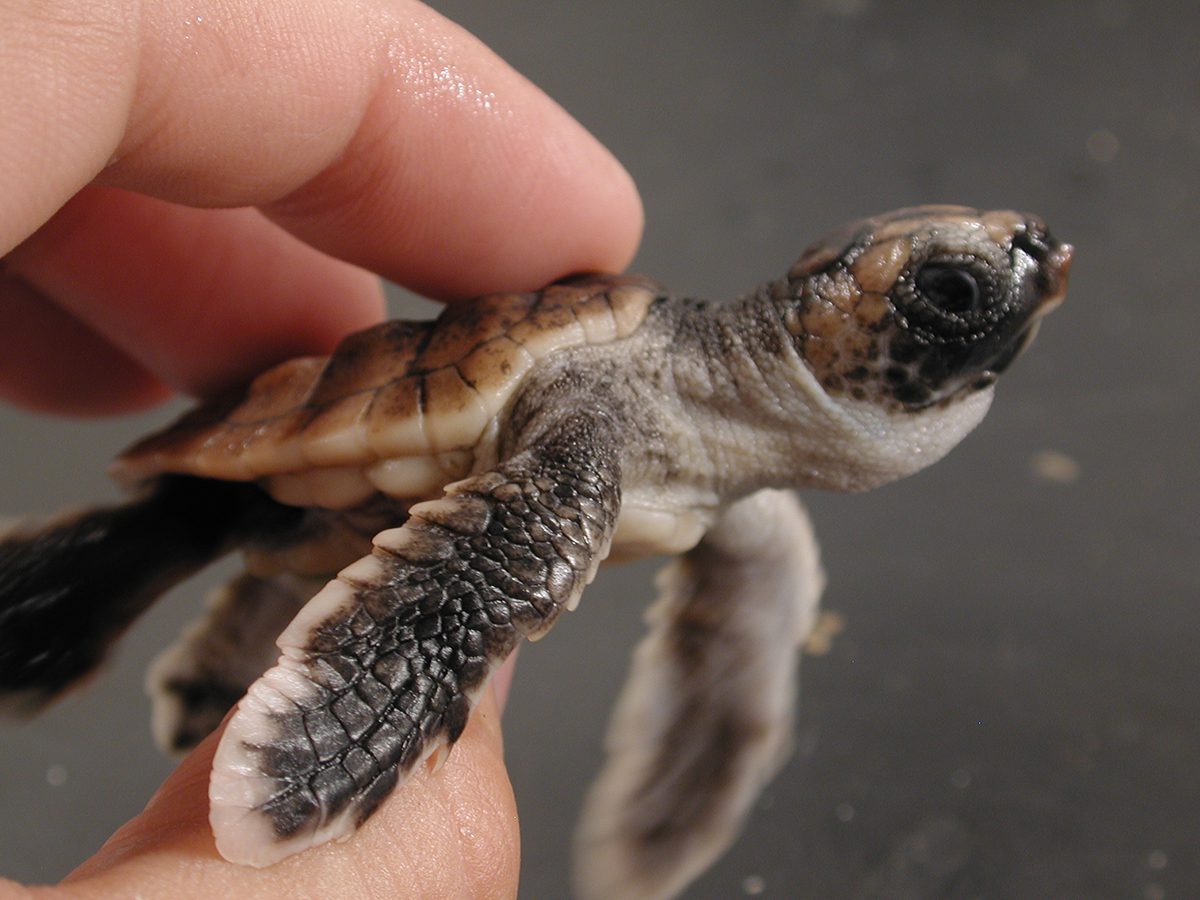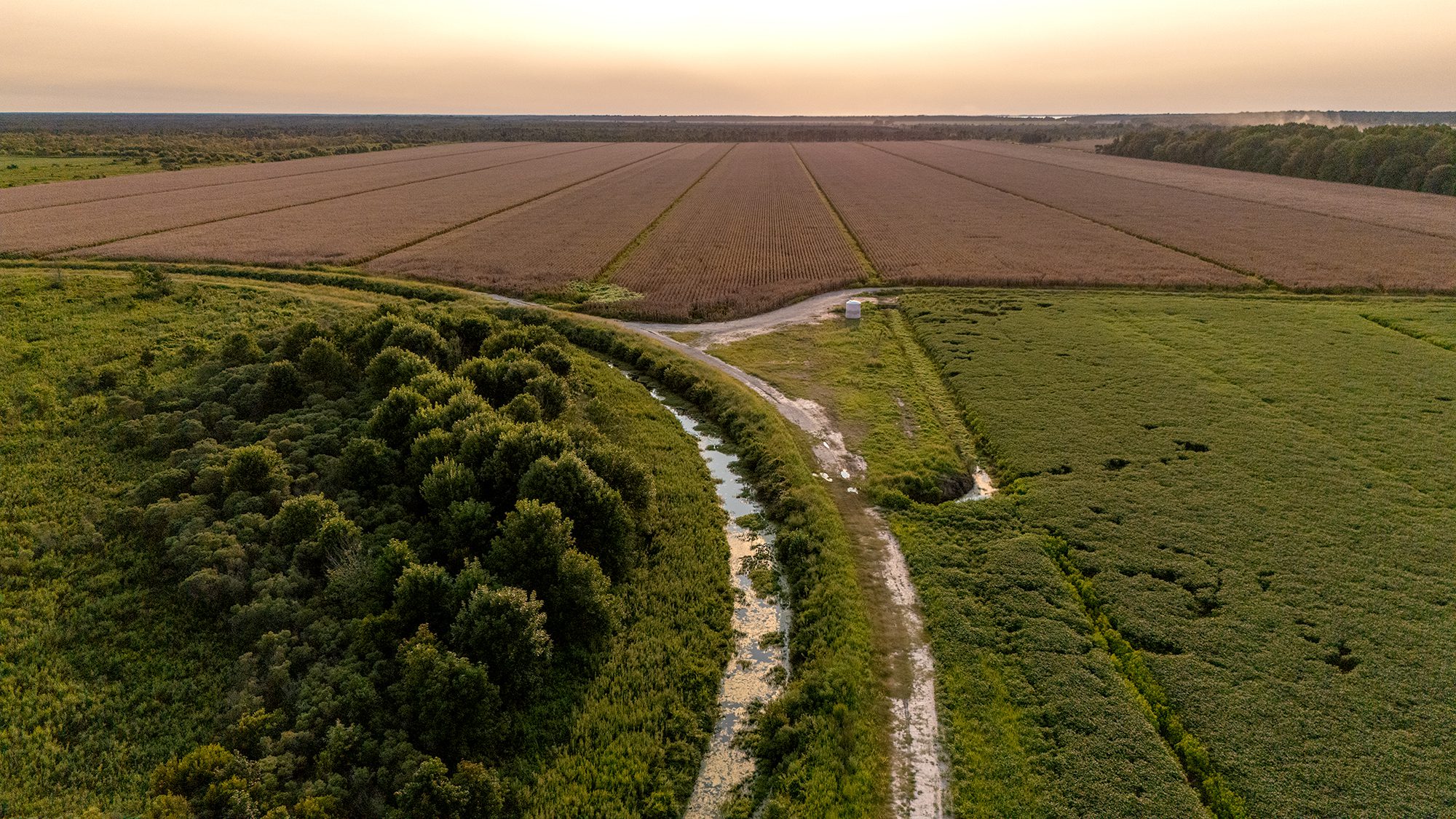Hydrilla is slowly choking rivers, ponds and lakes of North Carolina. Now it has become an even more ominous potential threat and an eagle killer.
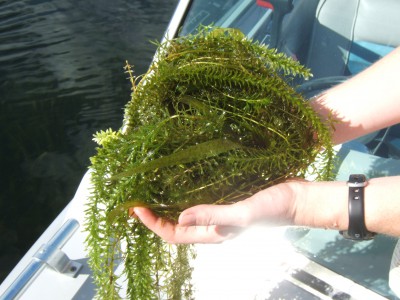
A newly identified deadly neurotoxin produced by algae found on the underside of the invasive aquatic plant has been linked to numerous bald eagle deaths in DeGray Lake, Arkansas and Thurmond Lake that straddles Georgia and South Carolina, and at Lake Sam Rayburn in Texas.
Supporter Spotlight
So far, the toxin has only been confirmed in North Carolina at Lake Surf in Moore County and Coachman’s Trail Lake in Raleigh. The bacteria have also been found at Mayo Lake in Person County, although the presence of the toxin has not been confirmed.
But wildlife biologists in the state are not letting down their guard on monitoring the mysterious killer.
“It’s been a challenge for all the conservation partners,” said John Stanton, a supervisory wildlife biologist for the U.S. Fish and Wildlife Service’s Division of Migratory Birds in Columbia, N.C. “We don’t know anything more about how it spreads and why it spreads.”
Bald eagles, likely one of the best-known conservation victories for the Endangered Species Act, have only recently been declared recovered from near-extinction 50 years ago. Population surveys taken in 2007, when the raptors were taken off the ESA list, recorded about 9,789 breeding pairs of bald eagles in the lower 48 states, according to U.S. Fish and Wildlife Service. In 1963, there were only 417 nesting pairs, an all-time low.
The law protected the iconic national symbol with measures such as buffer zones around nests. A ban on the pesticide DDT, which thinned egg shells, also fostered their recovery. Eagles are still protected under other laws, including the Migratory Bird Treaty Act.
Even so, it didn’t take long for an entirely new danger to emerge for the bald eagle.
Supporter Spotlight
In the mid-1990s, dead eagles started showing up in alarming numbers in Arkansas displaying signs of a neurological disease called avian vacuolar myelinopathy, or AVM. Since then, the disease is known to have killed more than 160 eagles in the Southeast, including 80 from the Thurmond Lake reservoir, a waterbird impoundment on the Savannah River. The actual number of deaths is likely higher, since not all the affected birds may have been found.
For 20 years, scientists knew the disease that killed the eagles; they had no idea what was causing the birds to get it. Then, in February, researchers at the University of Georgia’s Warnell School of Forestry and Natural Services published a paper in the journal Phytotaxa that identified the deadly agent as a unique cyanobacteria – or blue-green algae – that clung to the stems and leaves of hydrilla. The previously undiscovered bacteria, named Aetokthonos hydrillicola, a combination of Greek and Latin words that mean “an eagle killer that live on hydrilla.” The bacteria cause fatal lesions in the brain and spine of the birds.

“Even with rehabilitative efforts within 24 hours, the eagle dies,” Susan Wilde, an assistant professor at the University of Georgia and the lead researcher, said in a telephone interview.
Wilde said that the opportunistic raptors prey on sick or dead coots, a vegetarian duck-like waterbird that feasts on hydrilla. The coots eat the toxic hydrilla, and then the eagle eats the same hydrilla from the guts of the downed coot. Geese and mallards are also vulnerable to the disease, but they don’t eat as much hydrilla as coots. The toxin can sicken the birds in as little as 24 hours, affecting their ability to walk, swim and fly. The disease makes holes in the optic lobe, the cerebellum, the cerebrum and the spinal cord.
In one experiment, Wilde said, biologists aggressively treated ill coots, but most still died, and those that recovered still had extensive brain lesions. The disease has killed thousands of coots.
Researchers also put healthy coots and mallards on a lake known to contain toxic hydrilla, and within three to five days, they were sick.
“So it can happen pretty fast when the toxin is present,” Wilde said. “It doesn’t seem to bio-accumulate. This appears to be something more water-soluble.”
Wilde had observed that hydrilla proliferated at the sites where bald eagles had died after eating coots. Eventually, at every site, she detected the blue-green algae coating hydrilla. Closer examination found concentrations of cynanobacteria from 20 sites with confirmed cases of AVM. After intricate DNA sequencing and other laboratory analysis of the bacteria, researchers determined that it’s a new genus that forms large, branching colonies but is not found in water or sediment.
Cyanbacterial blooms in general have been happening more frequently in recent decades and can create health concerns in mammals, according to researchers. Wilde said that the neurotoxin hiding in hydrilla so far does not seem to sicken people, but research is continuing.
“I just don’t think we have evidence yet that there’s a human risk,” she said. “We don’t have evidence that mammals are susceptible and we don’t have evidence that humans are at risk.”
A University of Georgia project, CyanoTracker uses social media to monitor cyanobacterial water blooms
Stanton, with the Fish and Wildlife Service, said that coots are just starting to arrive in North Carolina from Canada for the winter. Although it is legal to hunt the birds, a type of rail, he said their meat is not often eaten by people.
Fortunately, Stanton said that hydrilla has not taken hold in northeastern North Carolina waterways, which tend to be too salty for the freshwater Asian weed. Only the Chowan River has been documented with hydrilla, although Kerr Lake and Lake Gaston just over the border in Virginia have serious problems with the weed.
“We have paid particular attention to Lake Mattamaskeet,” Stanton said, referring to the huge shallow lake in Hyde County. “That is a place it would be ideal for it.”
The lake, he added, was clear when he last checked in August.
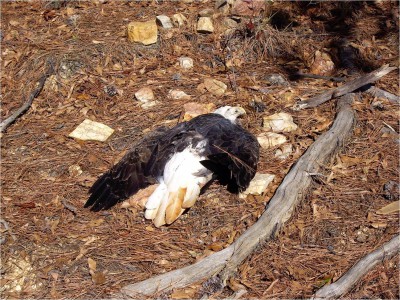
There are lots of ponds or lakes that have hydrilla – the weed is prolific and hardy – but fortunately only a few so far appear to have the algae. Lake Waccamaw in Columbus County, for instance, has no signs of it. There have also been some sites that don’t have hydrilla but still had the algae, which also grows on Brazilian elodia and Eurasian milfoil. And even with the algae present, it does mean it is producing the toxin.
As the migratory bird biologist for the service’s southeast region, Stanton said he would hear about sightings of dead bald eagles, but the numbers are still only about one or two a year.
There are currently about 100 to 150 nesting bald eagles in North Carolina. In 1984, there was only a single nest documented in the state. In the winter, the bald eagle population can spike to 1,000 or more. Golden eagles, a somewhat smaller eagle, are much rarer in North Carolina, Stanton said.
Eagles are powerful predators and masterful at finding vulnerable prey, a reality that could be their undoing if the hydrilla toxin spreads. Stanton describes a typical eagle behavior that could turn tragic: Eagles will often fly over flocks of waterfowl, spreading their vast wings to intimidate them. Instinctively, the waterbirds will all immediately try to fly away. The eagle watches for the ones who struggle to fly.
“They know they can swoop down and get a fresh meal,” he said. “Eagles will eat carrion, but if they have their preference, they like it fresh.”
If that weakened bird is a coot with toxic hydrilla in its belly, the eagle will soon be dead.
Hydrilla is notoriously difficult and expensive to eradicate once it takes hold in the water. It grows from bottom to top, and even the tiniest leaf carried by a boat propeller can spread the weed.
Wilde said that wildlife managers have had success with using sterile grass carp to consume an entire lake filled with hydrilla, even when it is toxic. The problem is that the fish, which are not killed by the neurotoxin, will also wipe out beneficial vegetation. Feeding trials conducted with chickens that ate the carp did not result in chicken deaths.
But Wilde said much needs to be learned about Aetokthonos hydrillicola.
“We still haven’t characterized the toxin,” she said. “It’s a novel toxin. We know it’s a neuro-toxin. But we haven’t isolated the chemistry of that specific toxin. We are just now able to isolate the component to be able to analyze the chemical. We don’t know how that causes brain lesions and we don’t know the chemical structure of that toxin yet.”
Wilde said she has expanded the research and is collaborating with other agencies.
“Once it appears, I’ve never seen it disappear,” she said, “unless the hydrilla disappears.”
To Learn More
- Track a Bacteria Bloom with CynoTracker
- University of Georgia Warnell School of Forestry



